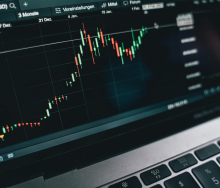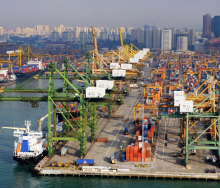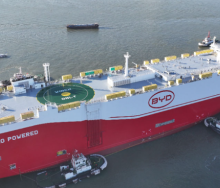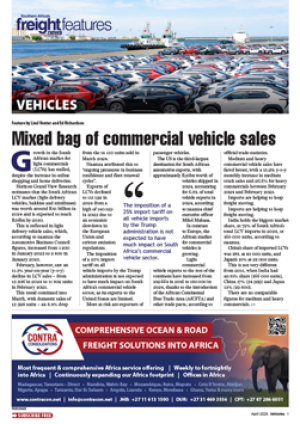The Container Price Sentiment Index (xCPSI) as monitored by Container xChange stood at 52 on January 8, marking a substantial decline from 71 during the same y-o-y period in 2024.
This change in sentiment has been evident throughout the latter half of 2024 and into the early weeks of 2025, according to the latest update.
The decline in sentiment was noted as an indication that market participants are less confident about further price increases in container prices, STAT Media Group reports.
For container traders, this shift may signal a more cautious approach, with reduced pressure to raise prices and a potential focus on optimising operations or adapting to new market conditions.
At the beginning of the year, the container market in the United States has been rife with speculation regarding an anticipated influx of used containers from Chinese manufacturers and wholesalers.
The update also highlighted a widespread expectation of substantial price increases following rises in steel prices.
However, it noted scepticism about the likelihood of tariffs, promised during Trump’s campaign, being implemented, as these could affect trade flows.
Additionally, it was emphasised that taxation on used containers was generally lower than on new ones, a factor likely influencing the strategic decisions of manufacturers and wholesalers in the industry.
Christian Roeloffs, Co-Founder and CEO of Container xChange, pointed out that intensifying geopolitical tensions were resulting in stricter sanctions and compliance requirements, which added complexity for container owners and users.
He stressed that strategic foresight and robust compliance frameworks would be crucial for success in 2025.
As the Chinese Lunar New Year approaches, container activity across the Asia-Pacific region is slowing, with freight forwarders prioritising the clearance of cargoes ahead of the holiday period.
It was further noted that manufacturers usually took one to two weeks to regain operational momentum following the New Year.
The report mentioned a seasonal slowdown in container trading in China, with container manufacturers reportedly halting new orders, reflecting cautious production planning.
While carrier-owned container (COC) prices for China-North America routes are softening, shipper-owned container (SOC) prices are showing a slight increase, attributed to reduced container stock from suppliers before the holiday.
This divergence could lead to shifting demand and price pressures in the weeks ahead.
In December, the average price of 40-foot-high cube containers in China declined by five per cent month-on-month across various locations.
The Transpacific Eastbound trade has significantly rebounded following the dip in 2023, with a strong recovery at major West Coast ports in 2024.
Port diversification strategies implemented during the pandemic were noted to still be influencing cargo flows, with Houston and New York-New Jersey maintaining relevance.
The market recovery in 2024 signalled improved demand and potentially better supply chain conditions compared with 2023.
The report also noted that the resurgence at Los Angeles and Long Beach ports in 2024 indicated cargo returning to traditional West Coast gateways, while the consistent growth in volumes at Houston from 2019 to 2024 demonstrated the Gulf Coast’s increasing importance in US trade.
Over the period from December 2023 to December 2024, global container prices have seen significant fluctuations, with some locations experiencing sharp increases while others faced notable declines.
Current market conditions, including capacity constraints due to Red Sea diversions and seasonal effects in the lead-up to the New Year, are supporting elevated freight rates.
Much will depend on whether the supply-demand imbalance persists into the first and second quarters of 2025.
The report concluded that, in the short term, the market was likely to remain tight, but stakeholders should prepare for potential shifts as seasonal demand diminished and geopolitical dynamics unfold.
Monitoring these factors will be essential for making informed decisions and capitalising on emerging trends.













